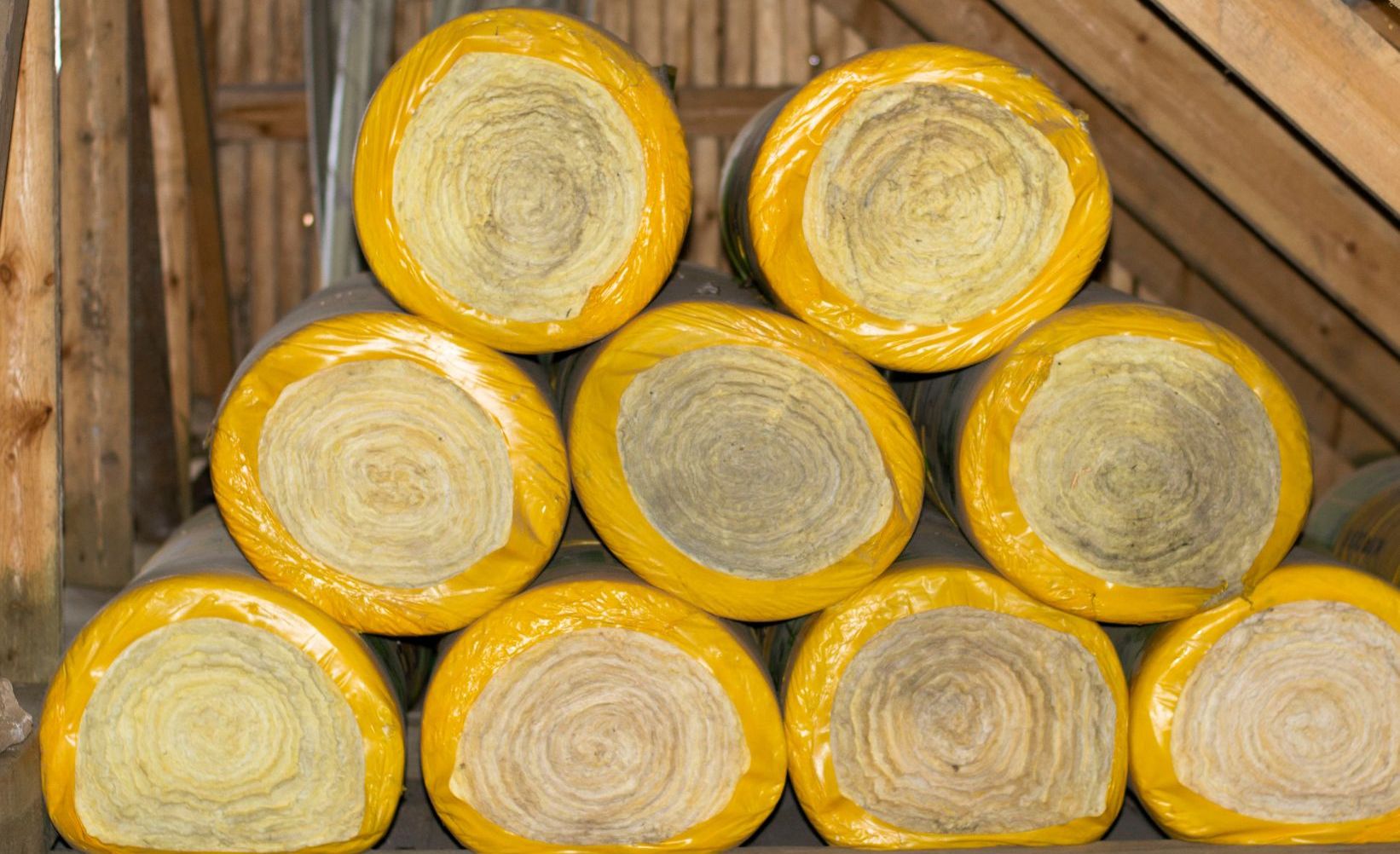Your Ultimate Guide To Loft Insulation
Loft insulation is seen as one of the most effective ways to improve the energy efficiency of your home, as it can make a huge difference to the thermal performance of a property.
Insulating your loft is a relatively low-cost investment compared to some other home improvements, and it can lead to significant savings in terms of your energy bills and carbon emissions. Read on to find out everything you need to know about investing in loft insulation.
How Does Loft Insulation Reduce Heat Loss?
Loft insulation works by preventing rising warmth from leaving your home through the roof. Instead, attic insulation keeps the heat in your home, helping to reduce heat loss and improve thermal performance.
With less heat escaping your home via the loft space and roof, you should find that you don’t need to heat your home quite as much, which should help to reduce how much you’re spending on your energy bills, as well as your excess carbon emissions.
What Are The Different Types Of Loft Insulation?
There are several different types of loft insulation that can be used to improve your home’s thermal performance, with fibreglass insulation and rockwool insulation among the most popular. Some people also opt for blown fibre insulation, or attach insulation boards to their roof joists, but let’s explore the two most common types in a little more detail.
Fibreglass Insulation

Fibreglass insulation is made from tiny fibres of glass that are heated to an extremely high temperature to melt it down, before being spun into fibres and bound together to form insulation material.
This type of insulation - which is sometimes also referred to as glass wool insulation - typically comes in rolls that can simply be rolled out onto the floor of your loft in between joists, almost as if you were unfurling a blanket.
Loft spaces may be more likely to suffer from damp than other rooms, so make sure you’re opting for fibreglass insulation alongside a vapour barrier to prevent excess moisture and subsequent insulation mould.
Rockwool Insulation
Rockwool insulation is also known as mineral wool insulation and stone wool insulation, so you may see the terms used interchangeably. This type of insulation is made in a similar way to fibreglass, but with rockwool, rocks are heated at a high temperature before being melted and spun to create this durable material.
Mineral wool is thicker than fibreglass insulation, which means it’s a slightly more expensive option for insulating a loft. However, rockwool is also more fire-resistant and soundproof than fibreglass, so if you use your attic space as another room, this may be the best loft insulation for you.
What Are The Benefits Of Loft Insulation?

By helping to stop heat from leaving your home, loft insulation helps to improve your property’s thermal performance, saving you money on your household energy bills while reducing excess carbon emissions too.
Figures from the Energy Saving Trust show just how much you could save on your bills each year by installing up to 270mm of loft insulation in your home, depending on the size of your property. Of course, there will be an initial installation cost, but the data shows that homeowners can soon earn this back in terms of energy bill savings:
- The average installation cost for loft insulation in a detached home in at £680, but annual energy bill savings could be as much as £580, meaning you’d effectively get your costs back in just over a year
- For a semi-detached property, the installation cost comes in at around £530, with annual bill savings at around £255
- It costs an average of £500 to install attic insulation in a mid-terraced property, but you could save in the region of £230 on your energy bills each year as a result
- Fitting loft insulation in a detached bungalow comes with a price tag of around £690, but the yearly energy bill savings should be around £365
And it’s not just your energy bills that will feel the benefits of loft insulation, but also the wider environment in your community - and indeed globally, as you’ll be doing your bit to contribute to lower carbon emissions.
Energy Saving Trust figures also show that homes can significantly lower their excess emissions by investing in attic insulation, with potential annual reductions coming in at:
- An average of 1,300kg for a detached house
- 600kg for a semi-detached property
- 540kg for a mid-terrace
- 850kg for a detached bungalow
Can I Get A Loft Insulation Grant?

You may be eligible to receive a loft insulation grant under the Energy Company Obligation (ECO), depending on factors such as your household income, and local authority funding in your area. The ECO is the main scheme in the UK for providing support with energy efficient home improvements, with homeowners able to access these via their energy provider.
Homeowners may find that they are entitled to receive different energy efficient home improvement grants under the ECO, but the majority of energy companies typically focus on cavity wall insulation and loft insulation. Visit the ECO website to find out more about whether you could be eligible to qualify for a loft insulation grant.
How To Install Loft Insulation In 5 Steps
You can install loft insulation in your home yourself if you have the right protective equipment and DIY tools to hand. However, if you aren’t confident in carrying out the job yourself, you should always call in a professional to help.
Here’s our guidance on how to install attic insulation in five simple steps:
1. Make Sure You Have The Right Equipment
Before you begin, make sure you’re wearing protective goggles, gloves, and a mask that covers your nose and mouth to prevent you inhaling any fibres that may irritate your lungs. You should also wear long sleeves to prevent any potential skin irritation, and you may want to wear a helmet to protect your head if you’re working in tight spaces.
In terms of tools, you’ll need:
- A screwdriver
- Cutting tool
- Tape measure
- Your chosen insulation material
2. Check For Potential Leaks
Carry out a thorough check of your loft space to ensure there aren’t any holes where heat could be escaping from or moisture could be getting in. If you do come across any gaps, fill these with sealant before you start installing your insulation, and leave any moist areas to dry fully, otherwise you may be risking damage to the material.
3. Create Space Around Electrical Fixtures
Take care to make sure that your insulation material does not come into contact with any electrical fixtures. Make sure you’re leaving a good few inches of space around each one to help prevent the material from overheating, as this could be extremely hazardous.
4. Roll Out Your Chosen Insulation
Once your loft space is prepared, you can start to install the insulation. If you’re carrying out this task yourself, it’s likely that you’ll be using what are known as batts rolls, and you’ll need to follow the below steps:
- Trim down your insulation rolls until they’re the right size for your attic space
- Start in one of the corners and unfurl your first roll
- Allow it to unroll towards the other side of the space
- When you meet crossbeams, trim the insulation material, then begin again on the other side to ensure the insulation is sitting comfortably between them
- When you reach a wall, trim the insulation, then start on your next row of rolling out
- Repeat the process until the insulation material is covering the whole space, and is sitting between all joists
- Double check that none of the material is touching an electrical fixture - trim as required
- You may then need to add an extra layer of insulation - to meet modern building regulations, most homes need to have two layers of loft insulation, one on top of the other
5. Fill In Any Gaps
There may be some awkwardly shaped nooks and crannies in your loft, so take the time to cut your insulation material down to size to ensure no gaps are being left uninsulated. Even the smallest of gaps could reduce the efficiency of your new loft insulation, so be as thorough as possible.
Got More Questions About Loft Insulation?
If you have a question about loft insulation that hasn’t been answered above, please contact us here and we’ll be more than happy to help.
At U Value, we’ve been supplying the building industry with insulation products and accessories for more than four decades. Whether you’re looking for fibreglass insulation, warmline insulated plasterboard, or breathable roofing membranes, we’ve got a fantastic range to help you complete projects of all sizes. Browse our full collection of products today.
For further information please visit: https://www.uvalueinsulations.co.uk/contact or phone: London: +44 20 3481 1322 or Manchester: +44 151 546 3260.

